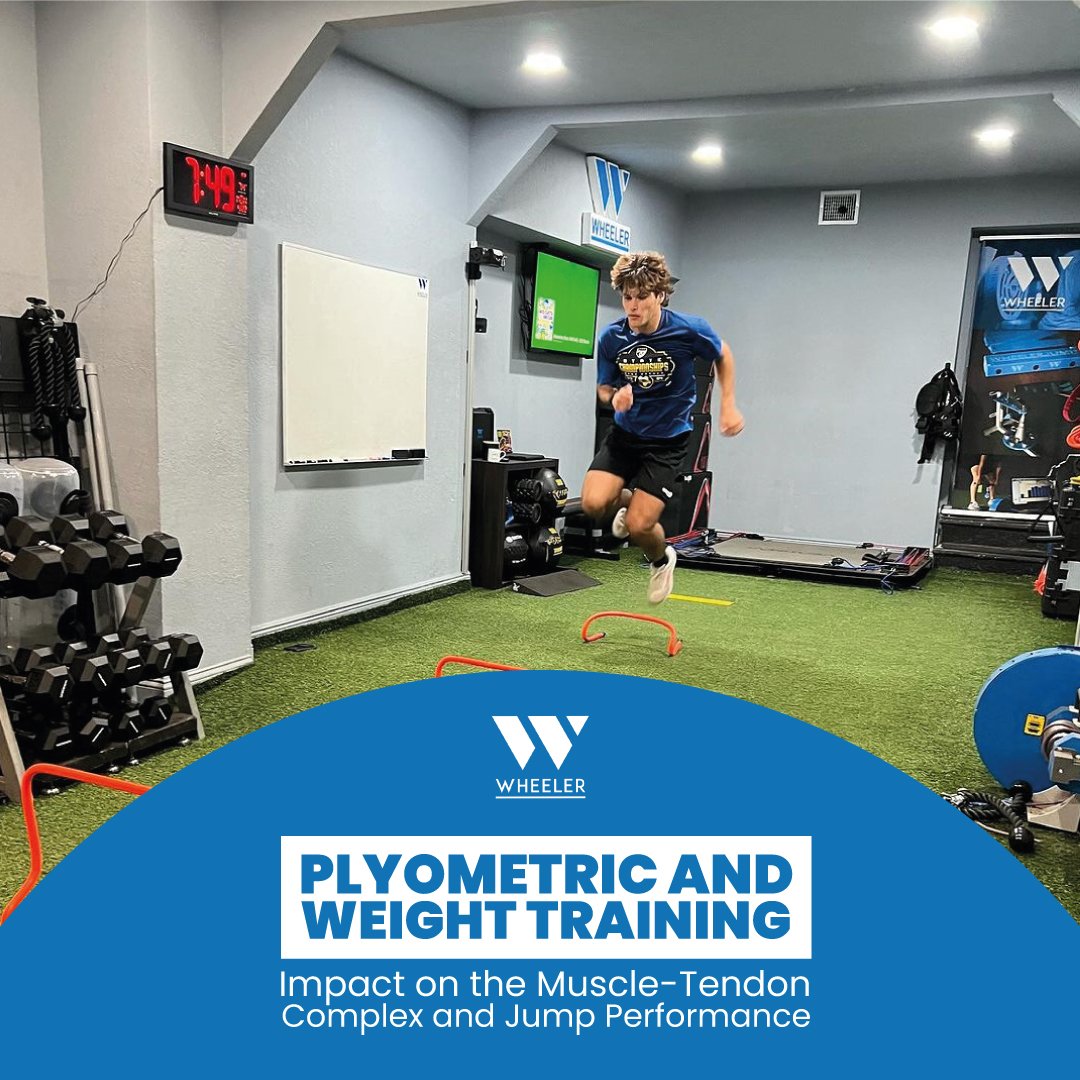The development of explosive strength is a fundamental pillar for improving sports performance, and two of the most common methodologies for this purpose are plyometric training and weight training. These approaches have specific effects on the muscle-tendon complex (MTC), a key unit for force production and jumping ability. Below, we will analyze how each type of training influences the properties of the MTC and how it translates into better jump performance.
The Muscle-Tendon Complex and Its Role in Performance
The MTC consists of muscles, tendons, and other connective tissues that work synergistically to generate and transmit forces. The efficiency of this complex is crucial for performing explosive movements, such as jumps. Both muscles and tendons have specialized functions: while muscles generate force through contraction, tendons act as springs that store and release elastic energy.
The MTC’s ability to optimize performance depends on the relationship between stiffness and elasticity. Greater tendon stiffness can improve force transmission, but adequate elasticity is also necessary to capitalize on the stretch-shortening cycle (SSC), which allows energy to be stored during the eccentric phase of movement and released in the concentric phase.
Plyometric Training: Improving Elasticity and SSC Utilization
Plyometric training focuses on dynamic exercises involving jumps, throws, and explosive movements that stimulate the SSC. By performing these exercises, muscles and tendons are subjected to rapid contraction and extension cycles, which improves the ability to harness stored elastic energy.
One of the main benefits of plyometric training is the optimization of tendon elasticity, which facilitates greater reuse of energy during explosive actions. Additionally, plyometric training can increase tendon stiffness to some extent, enhancing the MTC’s ability to transmit the force generated by the muscles.
A study analyzing the effects of plyometric training on jump performance found significant improvements in vertical jump height and the ability to quickly change direction. This suggests that plyometric exercises not only improve jump height but also enhance the speed and efficiency of explosive movements.
Weight Training: Muscle Strengthening and Increased Tendon Stiffness
On the other hand, weight training focuses more on strengthening muscles and improving tendon stiffness. Strength exercises such as squats and deadlifts place a high load on the MTC, leading to specific adaptations in the muscles and tendons. As muscles become stronger, they can generate more force during jumps and other explosive movements.
The tendon stiffness resulting from weight training also contributes to greater efficiency in force transmission. However, unlike plyometric training, the focus on maximum strength does not optimize the capacity to store and reuse elastic energy. Instead, weight training focuses on maximizing the muscle’s ability to produce force.
In a sports performance context, weight training can be especially useful for increasing maximum force generation capacity and improving the structural resilience of the MTC. However, to maximize jump performance, it would be necessary to combine weight training with a plyometric approach that leverages the benefits of the SSC.
Comparison and Combined Benefits
Although both plyometric and weight training can improve jump performance, they do so through different mechanisms. While plyometric training focuses on improving tendon elasticity and the ability to reuse elastic energy, weight training strengthens muscles and increases tendon stiffness, enhancing the ability to produce force directly.
Various studies suggest that a combination of both training methods may be the most effective strategy for improving jump performance and other explosive actions. Combining these approaches allows for greater synergy between muscle strength and the MTC’s ability to store and release elastic energy.
For example, an athlete who engages in both plyometric and weight training may experience significant improvements in both jump height and the ability to perform quick, powerful movements in various directions. This combination can also help prevent injuries, as both muscles and tendons become more resilient to the forces generated during exercise.
Conclusion
Plyometric and weight training are valuable tools for enhancing sports performance, especially in terms of explosive strength and jumping ability. By focusing on different aspects of the muscle-tendon complex, both types of training generate specific adaptations that complement each other. For athletes looking to optimize their performance, a strategy that integrates both methods is ideal for maximizing both force production and the efficient use of elastic energy, thereby achieving superior performance in jumping and other explosive movements.
This combined approach not only improves performance but also reduces the risk of injury by strengthening both muscles and tendons, making them more resistant to the physical demands of high-performance sports.
Author


